|
| In 1872 the sailing ship 'Mary Celeste' was discovered in good condition but without a trace from her crew. The vessel drifted in calm seas, 590 nautical miles off the coast of Gibraltar - only two sails were set. The crew was never found. What had happened? |
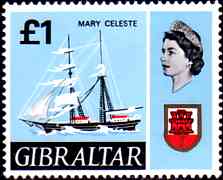 |
In 1861 the 'Mary Celeste' was built at Dewis shipyard, Spencer Island, New Scotland. She had a length of 99.3 ft, beam 25.3ft and 282 gross tons. The ship was equipped with two masts, rigged as a brigantine and bore the name 'Amazon'. The ship seemed to be doomed from the beginning! The owner died under mysterious circumstances immediately after registration. During her maiden voyage the ship crashed into a fixed fishing net construction and was heavily damaged. |
| During reconstruction fire broke out and destroyed many parts of the deck and the superstructure. Later the 'Amazon' collided with another brig in the Strait of Dover, sinking her in the process. In 1867 she ran aground off Cape Breton, managed to escape, but had to be docked again. Years later, she ran aground again at roughly the same position and again was heavily damaged. This time the costs for towing and repairs were deemed too high. The owner refused to pay and the ship was seized. | 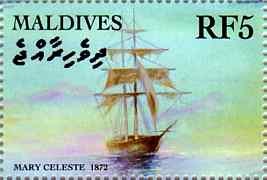 |
| The 'Amazon' was sold to a New York-based ship owner named Winchester. He renamed the ship 'Mary Celeste' and equipped it the ship with a copper fitting around the hull bottom for extra safety. | |||
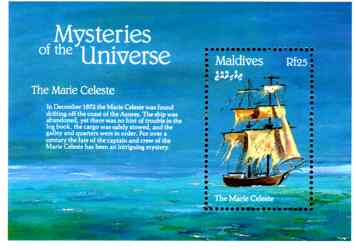
|
In the beginning of September, 1871, the ship was loaded with 1701
barrels of pure alcohol. The cargo was bound for Genova. Captain Briggs, who was also one of
the shareholders of the ship, took
his wife and his two year old daughter with him. Seven additional sailors completed the crew.
The captain was well-known as a puritan, a strict anti-alcoholic and a good seaman. The
load of alcohol should have been safe.
|
On December 4th, the 'Mary Celeste' was discovered by captain
Morehouse of the 'Dei Gratia' just north of the Acores.
| | |
|
The ship was drifting out of control,
only outer jib and a fore topsail hoisted. Nobody could be seen. Morehouse ordered three of his crew members into the small boat to row to the 'Mary Celeste' and check the ship. There was no apparent reason why the crew should have left the 'Mary Celeste'. They discovered enough water and food to last for months. The ship was in perfect condition. Two hatches stood open, a little bit of water gurgled in the hold, one alcohol barrel had been opened. The compass was out of order. | 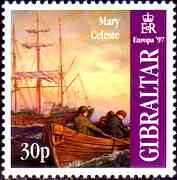
|
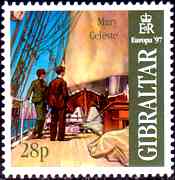 |
The life boat, the sextant, the chronometer and most of the ship's
papers were missing. Parts of the bulwarks had been dismantled to lower the boat.
Signs indicated that the crew had left the ship in a great hurry. They had left behind
their oil skin boots, pipes, tobacco and clothes. All things a seaman would take with him
when leaving a ship with time to spare. The galley was cleaned up, in the captain's cabin the beds were unmade and one bull's eye stood open. |
|
The log book was aboard. The last entry was dated 24th of November, 100 nm southwesterly of
the Acores. Ten days had passed until the ship was discovered by the 'Dei Gratia'. There were
only seven entries in the log book, one of them describing stormy weather. In those days it
was usual to make an entry now and then.
The crew of the 'Dei Gratia' readied the 'Mary Celeste' and set sail. The mate and two seamen sailed the ship to Gibraltar where they reached the port at the 13th of Decmber 1872. | 
|
| Immediately dozens of theories, rumours, tales and legends erupted. Books were written, a sea legal proceeding and an investigation by Lloyds followed. Arthur Conan Doyle, the creator of Sherlock Holmes, wrote a famous book about the incident. It was published in 1884 and was adopted by many other publications. The story even appeared on the list of disasters of the Bermuda Triangle, although the ship didn't pass the area of the Triangle. |
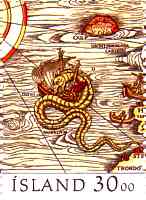 |
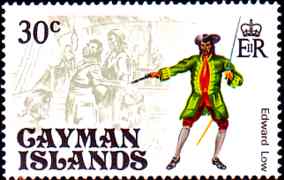 |
First the British authorities at Gibraltar dealt with the incident, then a Marine Court. The ship was in a good state, only the crew was missing. The first rumour spoke about sea snakes and cuttle-fishes, which - one by one - dragged the entire crew from the ship. Another theory said, the crew had drunk the industrial alcohol, killed the captain and escaped in the lifeboat. A lot of people assumed piracy. Maybe captain Morehouse had told the story just as he liked it to be. May be he had attacked the 'Mary Celeste' to get the salvage money. Some dark brown spots were found aboard, so several speculated it could be blood. Other stories spoke about bloody swords. The spots were investigated, but the results of the analysis mysteriously disappeared. At least Morehouse and his mate were absolved from all accusations and he and his crew of the 'Dei Gratia' got the salvage money of 8.000 Dollars. |
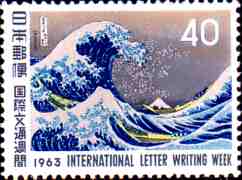 |
Another detailed theory reported the 'Mary Celeste' victim of a sea quake. The official investigation conducted by Lloyds blamed the cargo as the reason to leave the ship. The pure alcohol had developed toxic fumes and emitted them by 'sweating through the casks'. Captain Briggs feared fire and explosion and left the ship. This was supported by the opened hatches, a usual procedure for ships carrying alcohol. |
| Possibly the crew entered the small rowing boat and waited for the fumes to clear. Then maybe a gust had pushed the boat away from the ship or had torn the rope to the boat. It is possible, that the boat capsized in stormy seas. The only fact was, that all people of the 'Mary Celeste' were lost. | |
|
The 'Mary Celeste' remained a 'doomed ship'. She was sold several times. In 1884 she ran
aground on a coral reef off Haiti, caught fire and sank. The cicrcumstances remained mysterious,
so the owner was filed for insurance fraud.
The case ended because of formal errors and the owner was declared innocent.
In August 2001 a wreck was discovered on a reef off the coast of Haiti. The measurements length and beam were the same of the 'Mary Celeste'. The 'doomed ship' resurfaced. | 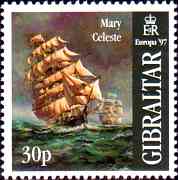
|
| The issue description of this stamp describes these ships as the 'Dei Gratia' and the 'Mary Celeste'. Both ships were two-masted brigantines. This stamp illustration looks l ike a painting of the great tea-clipper race between 'Ariel' and 'Teaping' in 1866. Have a look at our Clipper page. | |
© 1998 - 2003 Bjoern Moritz, all rights reserved.